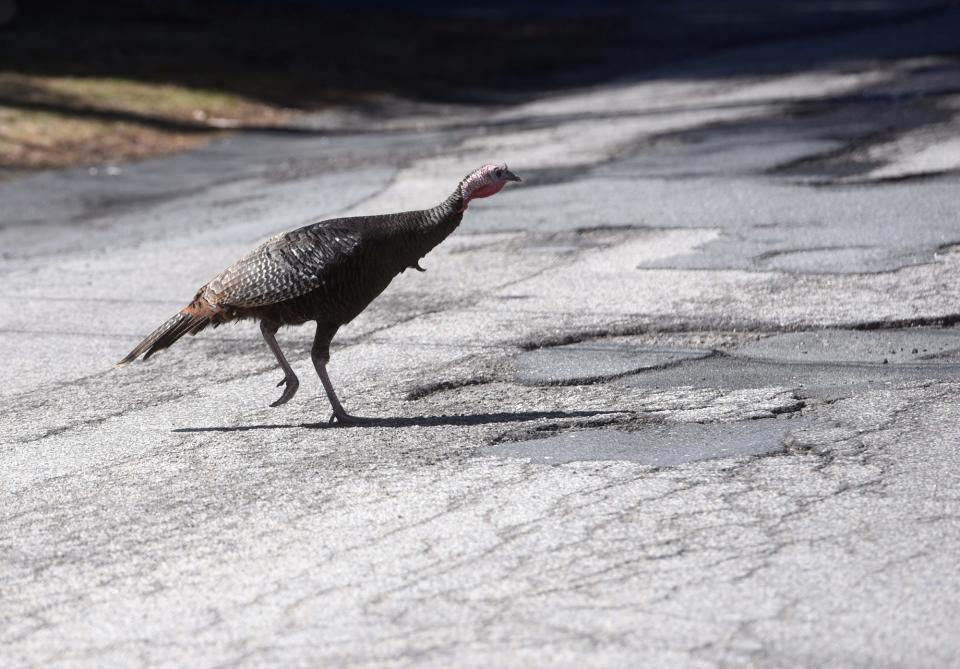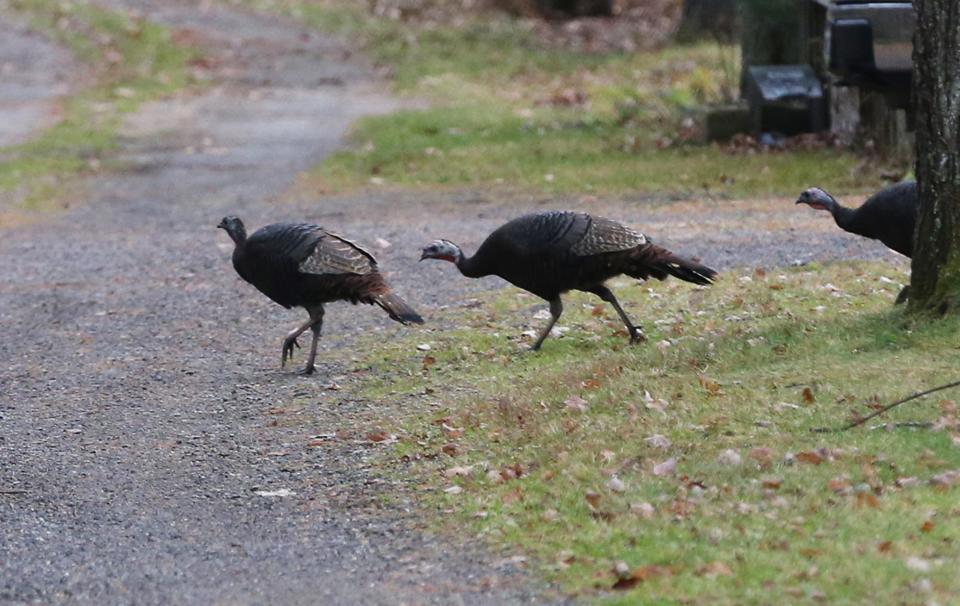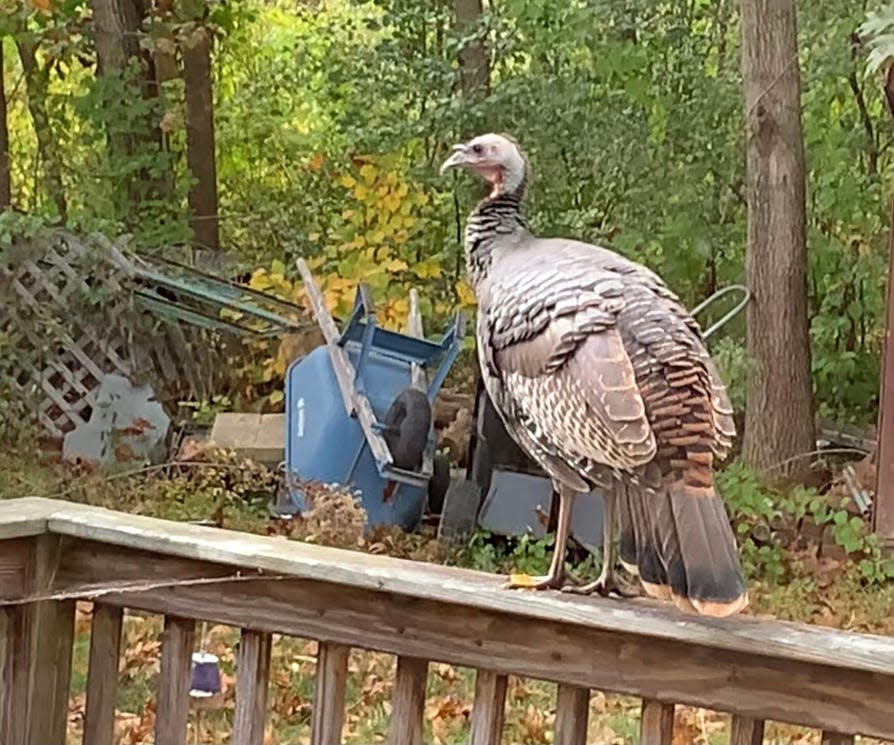Wild turkeys are everywhere: How they made their comeback and why they taste different
For those of us old enough to remember the 1970s, turkeys were not part of the normal backdrop of life in New England like they are now. Today, turkeys are everywhere.
Huge flocks graze on suburban lawns and block roads. They visit our porches. They menace our pets and our children. They chase us away if they don’t like what we’re doing. But, back in the early 1970s, there were no wild turkeys in New England. In fact, there hadn’t been any in these parts since the mid-1800s when they were driven to near extinction by over-hunting.
It is estimated there were as few as 30,000 wild turkeys left in the United States by the early 1900s, a tiny number given there are now a whopping 7 million or more wild turkeys nationwide. They were on their way to extinction.

When did wild turkey restoration efforts begin?
It wasn’t until the Pittman-Roberson Act of 1937 that efforts began to bring the wild turkey back by taxing sporting arms and ammunition, and paying for programs to bring back wildlife. The 1940 federal Wildlife Restoration program began returning wild turkeys to their original habitat. This was good timing: the shift of farming out of New England and the widespread failure of farms during the Great Depression heralded the return of forests, ideal habitat for the reintroduced turkeys. However, It took awhile for turkeys to make it back to New England.

Early efforts to reintroduce wild turkeys failed. It was difficult to capture large numbers of wild turkeys to transplant to new locations, so early reintroduction efforts focused on using captive-bred wild turkeys. These were genetically wild birds, but because they were raised in captivity they never received normal parental training and so never learned the social behaviors and survival skills necessary to be successful in the wild. It wasn't until methods were developed that were geared towards capturing large numbers of wild birds that turkeys were finally able to be successfully transplanted into their restored habitat.
How do you catch a flock of wild turkeys?
The cannon-net was the real game changer. This involved concealing a folded mesh net on the ground and setting out bait for turkeys as the trapper waited in a nearby blind. When the turkeys arrived, the trapper could remotely detonate black-powder cannons that would propel the net over the unsuspecting turkeys.

After some unsuccessful starts, wild turkeys were reintroduced into New Hampshire and Maine in the 1970s. In 1975, New Hampshire Fish and Game officials transplanted 25 wild turkeys from New York and Pennsylvania into the Connecticut River Valley, a location that was picked because of its large number of dairy farms. Dairy farms have a lot of corn waste and manure that can provide food for overwintering turkeys (turkeys do not migrate and do not do well during harsh winters). In 10 short years, New Hampshire had a large enough turkey population to open a hunting season.
Nature news: Salamanders on hunt for their winter homes. Should you help?
How many wild turkeys are there in NH, Maine?
Maine’s reintroduction efforts in 1978 were equally successful. Forty-one wild turkeys were transplanted from Vermont to the southern towns of York and Eliot. These turkey reintroductions exceeded expectations. Maine now has a solid population of approximately 60,000 birds, New Hampshire has close to 45,000, according to wildlife officials.
The rural-suburban communities found throughout Maine and New Hampshire provide the conditions wild turkeys need to thrive: large tracts of mature hardwood forest (especially nut-producing oaks and beech) interspersed with mature pine as well as grassy openings and thickets for raising their young. Bird feeders and farms help them overwinter north of their normal range by providing a stable source of food.
2020 hunting season: Maine hunters get more cracks at wild turkeys
The wild turkey reintroduction has been a huge success. In just 50 years, they have grown from tiny populations found in a fraction of their original habitat to burgeoning populations wherever they have been reintroduced. Wild turkeys are now found throughout the United States, in every state except Alaska. According to the National Wild Turkey Federation, wild turkeys occupy more square miles of habitat than any other game bird in North America, a tribute to modern wildlife management practices and to the resilience of the wild turkey.
When can you hunt wild turkeys?
These robust populations of turkeys delight turkey hunters everywhere. According to New Hampshire Fish and Game Turkey Project Leader Alison Keating, the New Hampshire wild turkey population has remained relatively stable for the past several years. Turkeys are more abundant in the southern part of the state than the northern part due to more suitable habitat and milder winters in the southern part of the state. A spring and a fall hunt help to keep the wild turkey population under control.
Bears in the back yard?: A NH Fish and Game expert explains rise in Seacoast bear sightings
What does wild turkey taste like?
According to Keating, wild turkey is a fundamentally different dining experience than domesticated turkey (a sub-species of wild turkey). In general, wild turkeys are smaller than domestic turkeys. An adult male turkey typically weighs between 15 to 25 pounds. They do not have as much breast meat as a domestic farm-raised bird because wild turkeys use their breast more for flying and they eat a wild diet of nuts, seeds and berries as opposed to domestic turkeys being given feed (generally corn-based) on a farm. Wild turkey meat is darker, more intense in flavor and has a firmer texture.

Susan Pike, a researcher and an environmental sciences and biology teacher at Dover High School, welcomes your ideas for future column topics. She may be reached at spike3116@gmail.com. Read more of her Nature News columns online at Seacoastonline.com and pikes-hikes.com, and follow her on Instagram @pikeshikes.
This article originally appeared on Portsmouth Herald: Wild turkeys in Seacoast NH and Maine, once over-hunted, bounce back

